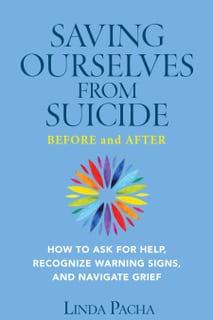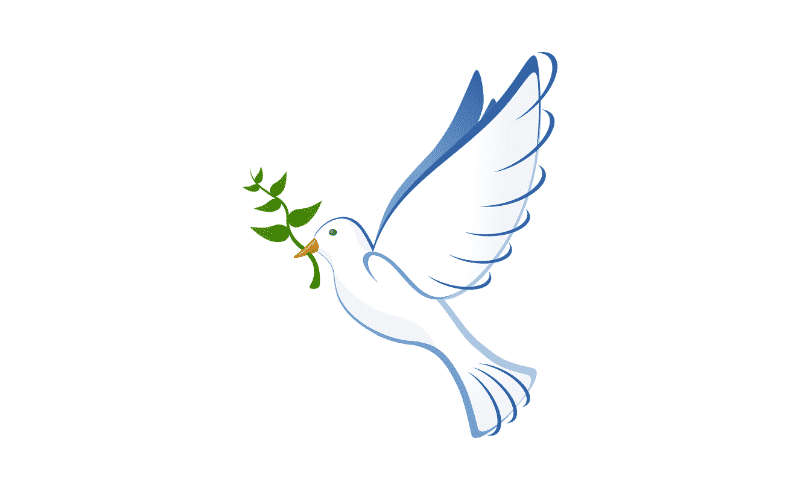March 24, 2021

As a parent who lost a child to suicide, I am heartsick to watch the number of mental health problems and suicides increase each year. The rapid upsurge of these during the COVID-19 pandemic is especially concerning. Regardless of our religious affiliation or denomination, many of us are feeling stress from social distancing, job losses, financial hardships, future uncertainties, fear of getting ill, and other difficulties resulting from the pandemic. Some are even grieving the loss of a loved one. There are plenty of statistics to quote, but what hits closest to home is that most of us know someone who is really struggling—and it may be ourselves. Mental health professionals everywhere are overworked right now to the point of experiencing burn-out, doing everything they can to help people navigate these unprecedented times. As a loss survivor, I join the effort by doing suicide prevention and grief support work, including public speaking, through my nonprofit, Nick’s Network of Hope (nicksnetworkofhope.org).
Eight years ago, my husband, Tom, and I lost our 19-year-old son, Nick, to suicide. Our daughter, Kelli, lost her best friend and closest confidant when her big brother died that day. Nick was a freshman in college and one of the nicest people we have ever known. He was our family’s North Star because he saw the good in absolutely everyone and was always optimistic. Losing a loved one to suicide, especially a child, is some of the worst pain you can go through. Tom, Kelli, and I don’t want any other family to go through what we have had to endure, so I offer you three takeaways based on our hindsight to help save lives:
A common misconception is that suicide only happens in troubled families. I speak from firsthand knowledge in telling you this is not the case. No one in my family was having significant problems. We were a loving, close-knit family. Having a mindset that “it could never happen in my family” is dangerous because you can become complacent and miss any potential warning signs.

You can also find some of the most common risk factors and warning signs for suicide in my book, Saving Ourselves from Suicide—Before and After: How to Ask for Help, Recognize Warning Signs, and Navigate Grief. I include real-life examples of missed warning signs in my son’s last text messages and label them for you. (Beyond Nick’s story, I also share my family’s hindsight and what got us through our grief. Learn tips to help yourself and others. See below for further information.)
If you start seeing warning signs from a friend or loved one, especially if he or she is at higher risk for suicide, do not delay asking for an assessment from a mental health professional. If you are in doubt, err on the side of caution because there are no do-overs when it comes to suicide.
Even if you think you already possess these virtues, we can all improve by becoming more aware of our words and actions. For example, do we take time to ask our mailperson how they are doing? How about the teenager who is bagging our groceries? Go beyond the rote “how are you?” that elicits the one-word response of “fine.” We also need to look around for people who are being left out of activities and include them. Teach your kids to compassionately reach out to those students sitting alone at the lunch table by modeling inclusiveness for them. Let them see you ask the neighbor no one knows to your next social gathering.
We need to watch our words and sometimes cut others slack because we don’t know what tough times or pain people are going through or have experienced in the past. Conversely, I have also learned firsthand that friendly words and acts of kindness can be a balm to a person who is hurting. We believe Nick had Asperger’s and was very high functioning. He was bullied throughout his life. Some kids said very mean things and laughed at him, which caused him great pain. Nick would probably be alive today if more people in his world treated him with kindness and compassion.
Even something as simple as a smile has the power to help others and make a difference.
A gentleman who jumped from the Golden Gate Bridge in the ’70s left a note in his apartment that said if one person he passed on the way to the bridge smiled at him, he wouldn’t jump. One smile—think about that. The one thing that would have been powerful enough to stop a man from dying is something we all can do with little effort.
If we get a gut feeling that someone might be troubled, we need to trust our intuition, step out of our comfort zone, and ask if they are okay? Too often, we stifle that inner voice to reach out and inquire because we are so worried about being wrong. Also, understand that a family may be too close to their loved one to recognize that he or she may be at risk. It sounds counterintuitive, but it happens. Like the TSA tells us in airports, if we see something, we have to say something. Don’t be afraid to speak up and tell the family if you see warning signs. Someone’s life may depend on it.
If you or someone you know is at risk for suicide, please call the National Suicide Prevention Lifeline at 1-800-273-8255, or text TALK to 741741.
Linda Pacha is the founder and president of Nick’s Network of Hope, a suicide prevention and grief support nonprofit. The Nick’s Network of Hope website, nicksnetworkofhope.org, contains helpful information and resources linking to national organizations. Linda is also the author of Saving Ourselves from Suicide—Before and After: How to Ask for Help, Recognize Warning Signs, and Navigate Grief, available on Amazon. For a list of additional booksellers, go to nicksnetworkofhope.org. All net sale proceeds go toward suicide prevention.

